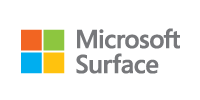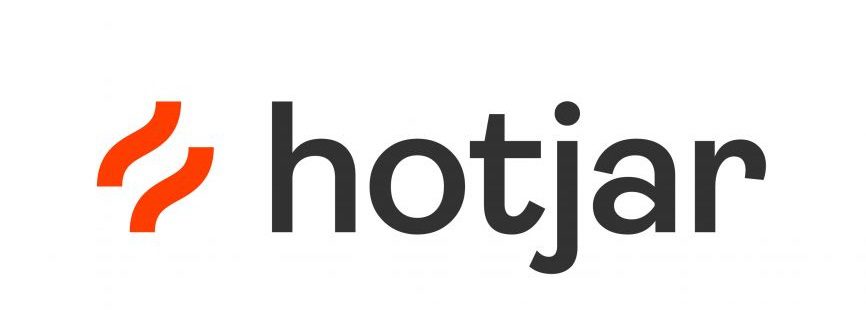Samia Kenley: A very warm welcome to everyone. My name is Samia Kenley and I’ll be your host for our third XMA plugin podcast. We’re very excited to start sharing our expertise across the broad range of IT discussion points. Every episode I’ll be inviting guest speakers to join me in our chat room and today I’m joined by professional learning specialist Dr Steven Bunce from XMA and we have Steve Besick who is the business development director at Microsoft education. Welcome to you both.
Steven Bunce / Steve Beswick: Good morning
Samia Kenley: It’s a pleasure to have you both here. Today’s topic is about what does the modern classroom look like and what elements are included to shape learning into Modern learning, so how would you see that? Steven?
Steven Bunce: Well Steve and I have been chatting already this morning and it’s been great to think about the classroom and the classroom often means to most people, a room of physical space and it’s a bit more than that. So were thinking about it it’s not just that physical room it’s also could be what’s in the room and especially the people in that room, we were just saying before Steve about the classroom and how it extends beyond that.
Steve Beswick: Yeah I mean technology allows you to learn anywhere now so I think we think of the Classroom, that physical space and it’s not just about how people learn, what people learn it’s about how they learn as well so they can learn now while they’re not in the classroom. Whereas before they were always learning in the classroom and those are vital skills to develop for students in order to progress. How can they be creative how can they collaborate even if they’re not physically there? and I think students today consume that, whether it’s a mobile phone whether it’s working at home, collaborating. So learning happens everywhere now the classroom is just the physical place where people come to meet which is still important but learning can happen outside of that 9 till 3:30 kind of school day.
Steven Bunce: And certainly it’s where that connectivity before you could share work with your peers and if you were lucky you’re work would we shared in a school corridor somewhere or for example, Chris Dyson head up in Leeds he has his heads office completely filled with this pupils work which is wonderful to see and yet now with that connectivity as Steve mentioned you can share your work and connect with people from not just your own country but from around the world.
Samia Kenley: And why should establishments consider technology? Why technology to make it modern?
Steve Beswick: Several reasons, technology is now immersive in everything we do both at school and outside school in the modern workplace and essentially children, students need to develop skills with technology in order to get jobs now. So everything’s imbedded into everything we do. Technologies like AI for instance are going to replace some of the jobs that are out today, so what does that mean in terms of skilling students to get the right skills to get the jobs that are required that the economy needs. So technology is immersed in everything that we do so that’s why it’s important that technology is involved in a deep way I think with students, teaching and learning.
Samia Kenley: What impact does this have on teachers especially?
Steve Beswick: Well sometimes, obviously teachers can be overruled by this and sometimes as we know, the children or the students know more than the teachers. But in my view it has to be embraced because ultimately education is there for moving students forward, getting the most from their potential in order to get jobs and be a whole person and so therefore you have to embrace that in the world that were in today. It can be quite frightening for teachers and that’s why it’s important that we support them with training them making them feel comfortable and I think the other thing that’s missed off a lot with technology in classrooms is we talk a lot about the teaching and learning that’s what we spoke about so far but how technology can actually save time for a teacher.
Samia Kenley: Reducing the workload, yeah.
Steve Beswick: I mean it’s really hard to attract and retain staff in schools today and certainly we’ve had examples where technologies used where you know even if a teacher can use technology and save an hour a day, either to be at home with their own families or to do better teaching, that’s got to be a good thing as well. So, you know there’s a huge focus in this area of teaching and learning whereas actually, we need to focus on the teacher and how they can be more productive using technologies.
Samia Kenley: And all supported as well, that’s absolutely correct. So, on that can you give a personal example where you’ve seen technology actually change education?
Steve Beswick: I’ve seen many, but you know I think sometimes it’s the simple things. I was in a school a few months ago and though it was a primary school and I know I think a 10 or 11 year old, looking at Shakespeare and really getting into Shakespeare because it was done in an animated way through technology and the technology enabled her to consume Shakespeare in a very different way.
Samia Kenley: And at the age of 10, that’s quite impressive.
Steve Beswick: Yeah, now clearly it wasn’t at the age of 10 or 11, no bodies going to open up a book of Shakespeare and read it and get excited about it, but I left her feeling that technology had enabled her to develop a knowledge of Shakespeare in a way that she will probably take forward. Who know when she 17/18/19 what she might be doing but by introducing her to Shakespeare through technology at that age, I think it’s a really powerful thing.
Samia Kenley: That’s really interesting. Steven I think you’ve got some really good examples haven’t you? You do a lot of training across the country.
Steven Bunce: Certainly, just the simple things like the camera on a tablet, it makes such a big difference to be able to capture something to be able to share that anyway that’s capturing it and showing it back with the class through projecting your big screen so they can all sit and talk about it in the best impact is where there’s been some times children maybe a bit reluctant to speak up in class or they feel they need to think more carefully about the work before they share it and therefore being able to capture some images to maybe to make a short video to try it and try again and then get something they feel more comfortable to share, it just enable them to do that and as ever with all the accessibility tools are coming into the devices it’s just it’s wonderful to see how some of those are essential for some students and some children where it’s the weather it’s helping them with dyslexia or something like that. But also for all students things like being able to dictate into the tablets just helps them get some ideas out their heads and down there, that they can work with and it’s just so simple things which made the biggest difference.
Steve Beswick: I think that the dyslexia one is an important one because there’s a lot of dyslexic people out there probably some don’t realise it and for them to be taught in the same classroom, using the same tools as others albeit with some additions is important, whereas previously they weren’t taught in the right way they were put in another classroom, they didn’t feel part of the group and so technology enabling dyslexic, students to work in the same way I think it’s really powerful.
Samia Kenley: That’s where you’d see the most impact, I think technology really helps those that need it the most. And on that how does the modern classroom prepare us for the modern workplace?
Steve Beswick: As I say, the modern classroom is all about the modern learning environment and making sure that the children or the students get the right skills for work. Ok, so ultimately clearly we want to produce rounded individuals but we need to make sure their skilled ready for work and I think as I said before, it’s not just about what there taught it’s about how there taught. So, for us as an employer for instance were looking for, you know people that have got skills around things like creativity and collaboration because as AI comes into the economy, all the more mundane jobs are going to be impacted. So therefore everything needs to be elevated up and so skills like creativity and collaboration so it’s not just about as I say what there taught so it’s physics chemistry but how do you teach students you know in a collaborative way so they develop collaboration skills by doing physics and creativity skills because that’s what modern employers are looking for because that’s going to be the differentiator for them in in the economy that were in.
Steven Bunce: Certainly, I think I’ve always followed the constructionist approach in teaching in terms of Seymour Papert did and now Mitch Resnick and all the scratch programming and his team there developed that, and their mantra is the 4 p’s having a passion, having a project, peers to look at it and then actually to play with and be creative with how you approach those things. It’s that, that Steve was saying that creative, that collaboration those are the skills which they need and before we start recording we started talking about career changes that people have had as they’ve gone from either university or college and they’ve changed career as they’ve gone and that’s something that’s been my experience as well you didn’t necessarily set out in that career and my own children keep saying to me: im not sure what I want to do when I grow up and I say well me neither yet, to be honest.
Steve Beswick: Its interesting, we’ve got Linkedin data shows that you know people leaving school, leaving University with a passion or a degree in say chemistry, not many stay in chemistry so you know by the time their thirty, there probably doing something completely different. So that but the broad skill set of creativity collaboration passion.
Samia Kenley: Its transfers
Steve Beswick: It transfers, right. Whereas clearly chemistry to say becoming an accountant isn’t necessary that transferable but if there taught in the right way in terms of the skill set then that’s got to be good.
Samia Kenley: So, that’s great that technology actually supports that level of career management I guess in a way, so you don’t have to start off at something but you can end up wherever you want to be.
Steve Beswick: I think you look at collaboration and technology you know, previous to technology the teacher said put your hand up or get into groups and all that kind of stuff. There’s a lot of shy people in the room, maybe. Whereas technology can help break down the barriers and so allow people to collaborate.
Samia Kenley: And be more inclusive.
Steve Beswick: And be more inclusive to people who may not have done before technology was there.
Steven Bunce: Certainly, things like where you can video conference with somebody around the world. It just brings that collaboration home to the classroom, where the children say well look, were learning about this can we go speak to someone who’s there on the spot that’s the live reporter and that world view is opened up to the more, compared to the more modern classroom where we talked about it being a physical space where they are sitting in a room somewhere they are now globally connected.
Steve Beswick: And at a young age, through that technology understanding different cultures around the world. We know there’s conflict in the world, there’s lots of different opinions around the world etc and I think children understanding different cultures at a very early age.
Samia Kenley: It’s very key, yes.
Steve Beswick: Whereas previously it might have been, in my day it was like a French exchange when you were 15, if you were lucky. Whereas now you can deeply understand at a very young age different cultures which I think is good as well.
Samia Kenley: So what I’ve taken from today is that the modern classroom is more than just a physical space, a space that technology can actually transform whether your inside a physical classroom or outside one and also that teachers and students are more empowered to learn and to also teach and develop skills, that can be transferable when they later on go into the modern workplace. Of course, if any of our listeners have any questions around their own transformation projects please do get in touch with our technical experts at XMA. As always, our contact details are on our podcast webpage. Thank you Steven and thank you Steve for joining us today it’s been an absolute pleasure talking to you both and thank you all for listening and for tuning in to the XMA plug in. We would love to continue a conversation with you so please get in touch, but for now catch you next time.









 Monitoring by Hotjar
Monitoring by Hotjar